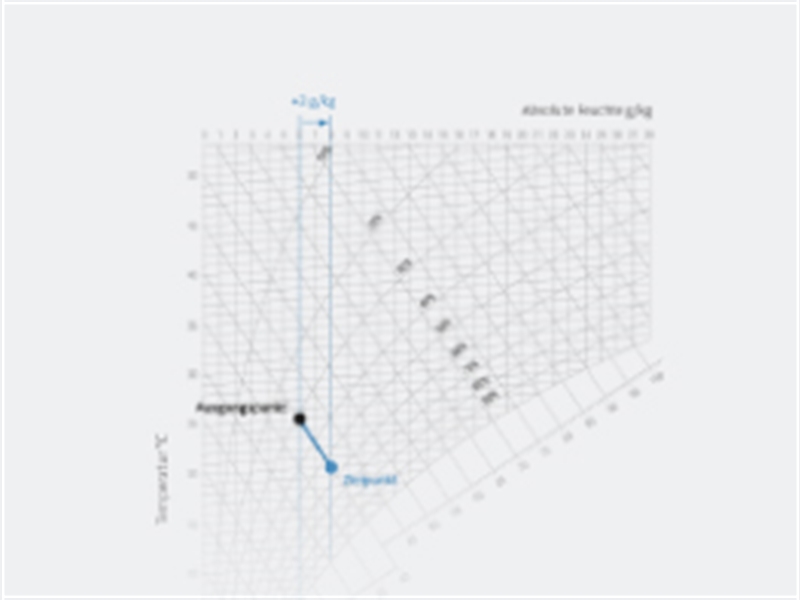
Humidification Made Simple:
What is adiabatic air humidification?
Vaporization is an isothermal process while atomization and evaporation are adiabatic processes.
In adiabatic humidification, water is provided to air in liquid form and must therefore still achieve a gaseous state. Energy is required for this purpose, and is drawn from the surrounding air in the form of heat. Since a decrease in temperature also takes place in this case, the process is also called an adiabatic cooling effect.
Evaporation
In the case of evaporation, water is guided over evaporator mats while the air to be humidified is applied over the mats at the same time and thus provided with humidity. The advantage of humidification by means of evaporation is that not only operating costs, but investment costs as well, are very inexpensive for a humidification system of this type.
And in addition to humidification, evaporators can also be used to cool buildings. Cooling becomes especially energy-efficient through a system which uses indirect evaporative cooling. As conventional cooling units can essentially be dimensioned to be smaller, their costs of operation significantly decrease.
Atomization
In the case of humidification through atomization, water is provided to the air to be humidified as small droplets of water, via mechanical vaporizers or with the help of nozzles. Since this method causes the state of water to change and requires energy from the surrounding air, adiabatic humidification systems in environments with high heat generation can also contribute to cooling in addition to their basic function of humidification. Areas of Application
Adiabatic humidification comes into use in many different fields. The process represents an important component in the area of outdoor air cooling in hot countries. 250 “air-conditioned sunshades” were installed in Medina to shade and cool the square in front of one of the largest mosques in the world. These devices use adiabatic humidification to provide a perceptible average temperature drop of 10°C.
Adiabatic humidification is also used in the electronics industry, for example in Facebook's data center in Luleå, Sweden. An adiabatic system is used here to cool three servers which each occupy a surface area of 28,000 m². The system uses up 13,000 liters of water per hour, making for a power output of 8,840 kW.
Example of adiabatic humidification calculation
Given:
Calculation of ∆h/∆x:
| ∆h | = | kJ/kg |
| ∆x | g/kg dry air |
